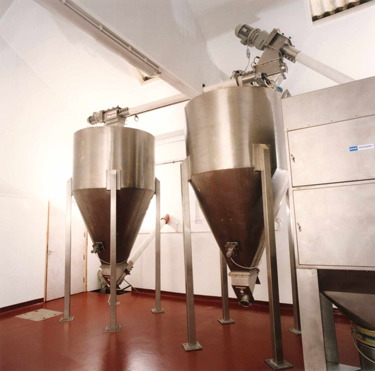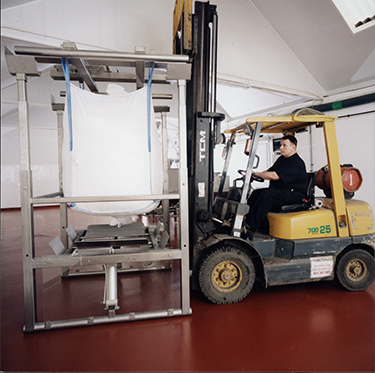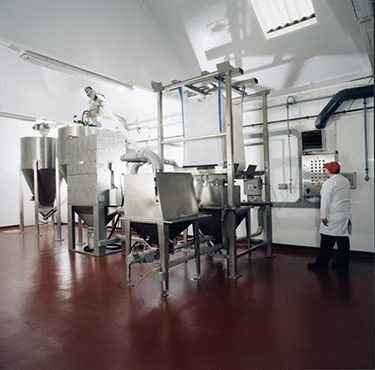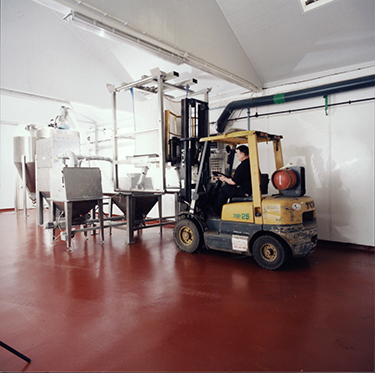 Click to enlarge
Click to enlargeHorizontal cross-feed conveyor allows selective filling of silos which discharge into conveyors routed through plant wall to feed a packaging line.
 Click to enlarge
Click to enlargeFork lift truck loads bulk bag into intermediate frame remote from the base frame.
 Click to enlarge
Click to enlargeFork lift truck negotiates intermediate frame holding bulk bag, between ceiling cross-members for positioning onto feed hopper.
 Click to enlarge
Click to enlargeComplete system with operator programming the process parameters.


 Click to enlarge
Click to enlarge Click to enlarge
Click to enlarge Click to enlarge
Click to enlarge Click to enlarge
Click to enlarge